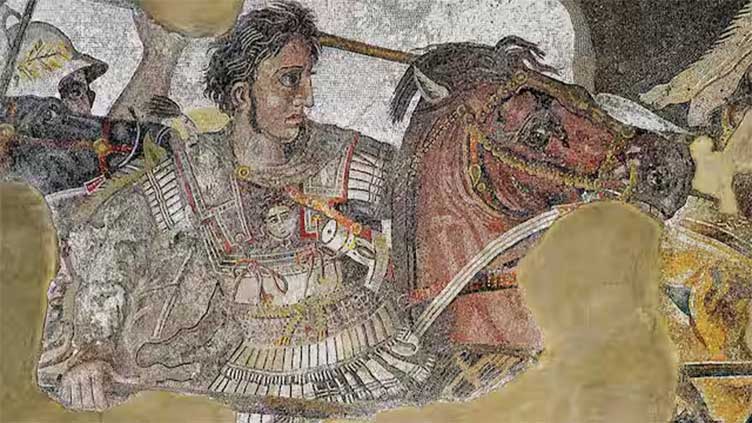A royal piece of cloth? Archaeologists find Alexander the Great's tunic at tomb

WeirdNews
In Tomb II, the archaeologists found a purple and white tunic
(Web Desk) - In a stunning discovery, an international team of archaeologists - headed by Democritus University of Thrace's Antonis Bartsiokas - found a piece of cloth which was believed to be Alexander the Great's tunic in one of the Royal Tombs at Vergina, Greece.
In the research paper published in the Journal of Field Archaeology, Bartsiokas explained the evidence around the purple and white tunic and said that the remains of three of the people who were buried at the famous burial site have been identified by his team.
In the earlier research, it was found that many of Alexander the Great's family members were laid to rest in the Royal Tombs at Vergina
In the new research, Bartsiokas and colleagues checked the three tombs at the site again after they were named Tomb I, II and III.
In Tomb II, the archaeologists found a purple and white tunic. The tunic was tested through gas chromatography and Fourier-transform infrared spectroscopy, and it was found that it was made of cotton and dyed with purple colour.
It was noted by researchers that the tunic was featured in a frieze in Tomb II which was identified to belong to Alexander. The tunic was made of all gold and was said to have a link with ancient Persia.
“This [tunic] is also depicted in the frieze of Tomb II on the sixth hunter, identified as Alexander. The Persian gazelle, depicted in the frieze also downdates Tomb II. Thus, many of the artefacts in Tomb II belonged to Alexander the Great," wrote the study authors.
“There is also archaeological evidence to support this. For example, the skeleton in Tomb I shows a synostosis [fusion] on the thigh with the leg.
This clearly indicates that this skeleton belongs to Alexander’s father, as Philip II was limping. Additionally, archaeologists found a newborn in Tomb I, further evidence that it belongs to Philip II.
Historical sources mention only one newborn, likely belonging to Cleopatra, the youngest of Philip’s seven wives," explained Antonios Bartsiokas of the Democritus University of Thrace.
The researchers were not able to understand Alexander the Great's tunic and gold materials left in the tomb.



